A cold-tolerant plant is a type of plant that can tolerate low temperatures and less-than-ideal growing conditions. These plants are often used in places with limited natural light or heat, such as offices, classrooms, or homes with insufficient heating. In a colder climate, you know that your plants don’t always do well when the temperature drops below freezing.
Keeping your plants indoors is important to survive the colder temperatures in a region with cold winters. Various indoor plants are cold tolerant, and each has its benefits. For example, some plants, such as houseplants, help to improve air quality, while others provide oxygen and promote relaxation.
12 Cold-tolerant Indoor Plants For Winter Weather
ZZ Plant
ZZ plant is a succulent plant that does well in cold weather. It can tolerate temperatures as low as 7°C, making it a great choice for indoor plants during winter. ZZ plant is also drought resistant, so that it can handle occasional dry spells. ZZ plant is best for indoor plants in cold weather. ZZ plant grows quickly to be used as an ornamental plant or in a small space.
In case you missed it: How to Grow and Care for ZZ Plants Indoors: A Beginners Guide
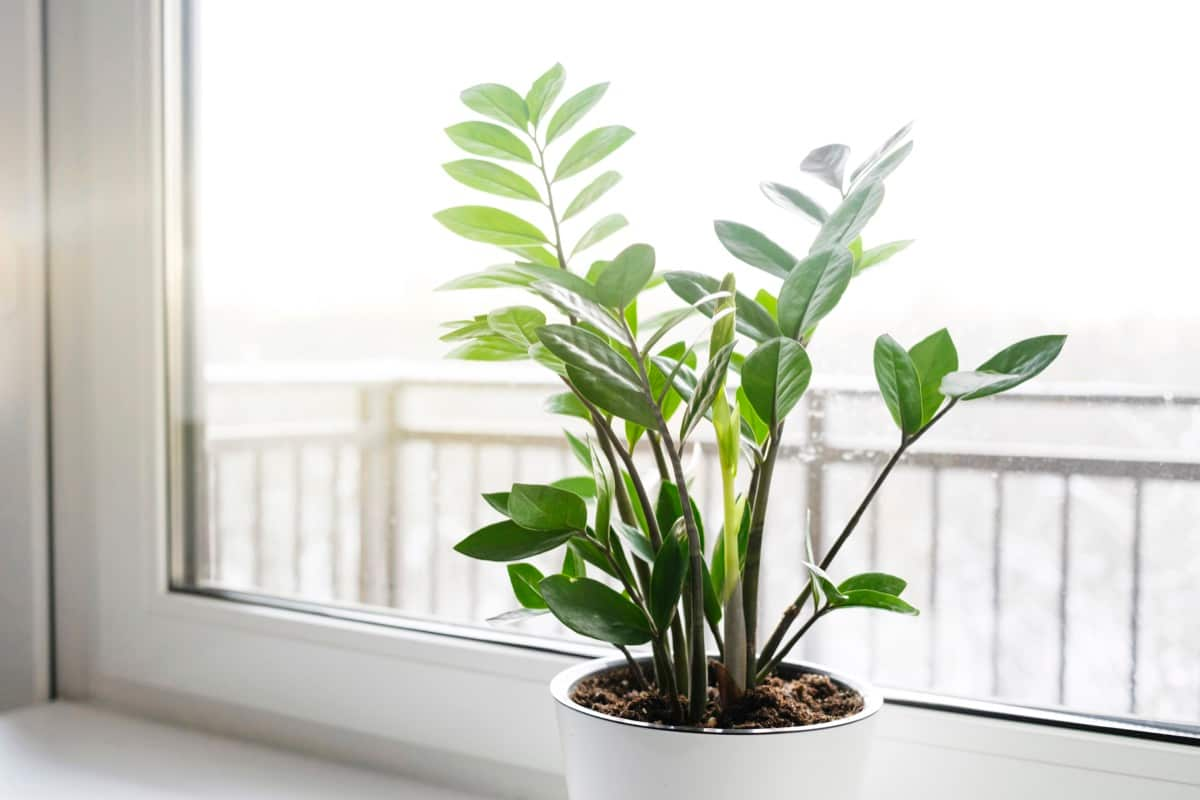
They also do well in low-light environments, making them ideal candidates for indoor plants in winter weather. They can handle temperatures below freezing and usually do well in low-light conditions. Plus, they come in various colors and shapes, so you can find one that perfectly matches your interior design.
Moth Orchid
Many cold-tolerant indoor plants can take the chill of winter weather. One such plant is the Moth Orchid. This attractive orchid can withstand temperatures as low as 3°C. Orchids make great plants for the home or office because they require very little care. When the topsoil feels dry, water them, fertilize them every couple of months with a balanced fertilizer, and give them some bright indirect light in the morning or evening.
Consider growing your Moth Orchid in a container to stay cooler and drier during colder months. Place your Moth Orchid near a window with plenty of natural light to help it grow and flower properly.
Clivia
Clivia is generally a small plant, growing 2 to 5 centimeters tall, with narrow leaves and flowers in umbels. The flowers are usually red or orange, but the genus has many colors and patterns. Some species are partly frost tolerant, but most are cold tolerant to very cold temperatures. Clivia can be kept easily on a window sill or on a balcony, where they will add color and fragrance during the winter months. Plants should be placed in a sunny location with good air circulation.
In case you missed it: Homemade Bug Traps that Catch Unwanted Pests: Benefits of Using Natural Pest Traps
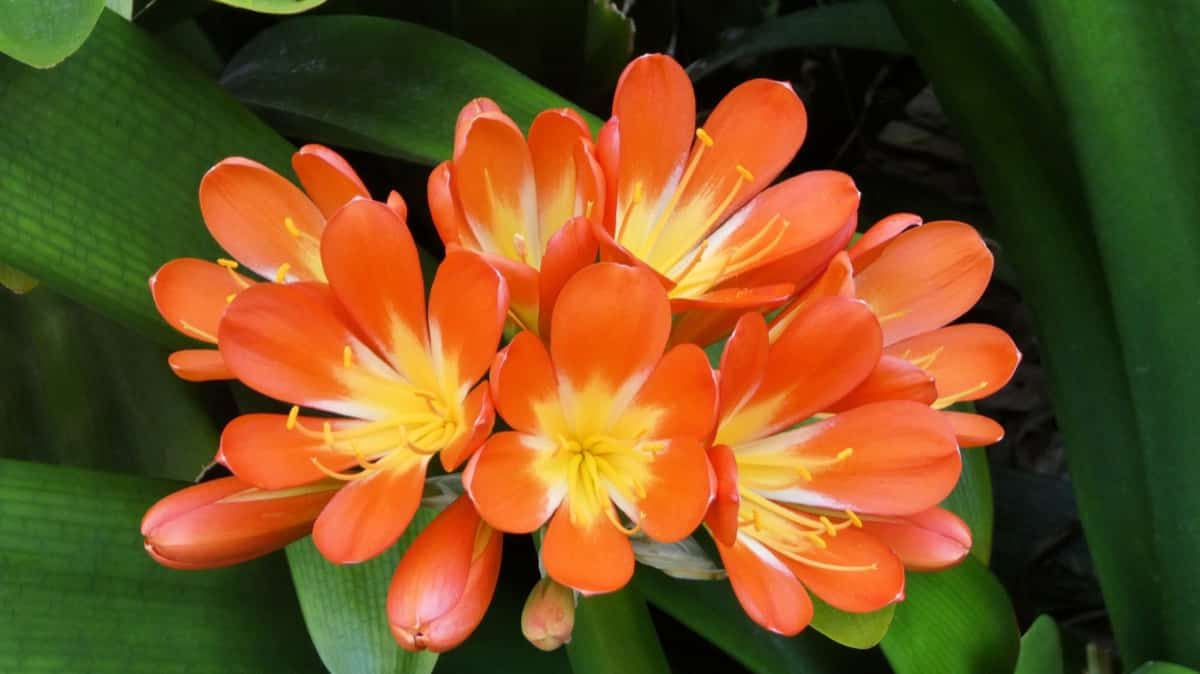
Water should be withheld for two weeks before planting to induce rooting formation. Planting distance should be about 18 inches apart, with taller varieties spaced further apart for optimal yield. Once planted, fertilize monthly with a balanced liquid fertilizer and water regularly; allow the soil to dry before watering again. Do not over-water, as this will cause root rot. Prune back old growth once flowers have faded to promote new growth; deadheading is unnecessary as Clivia plants reseed readily.
Jade
Jade has smooth, green wood and grows best in moist, well-drained soil. Jade is a popular indoor plant choice for those living in colder climates. This hardy succulent loves low light, humidity, and moisture. As long as you provide these conditions, Jade tolerates cold temperatures.
In case you missed it: Growing Jade Plants In Pots – Containers, Indoors
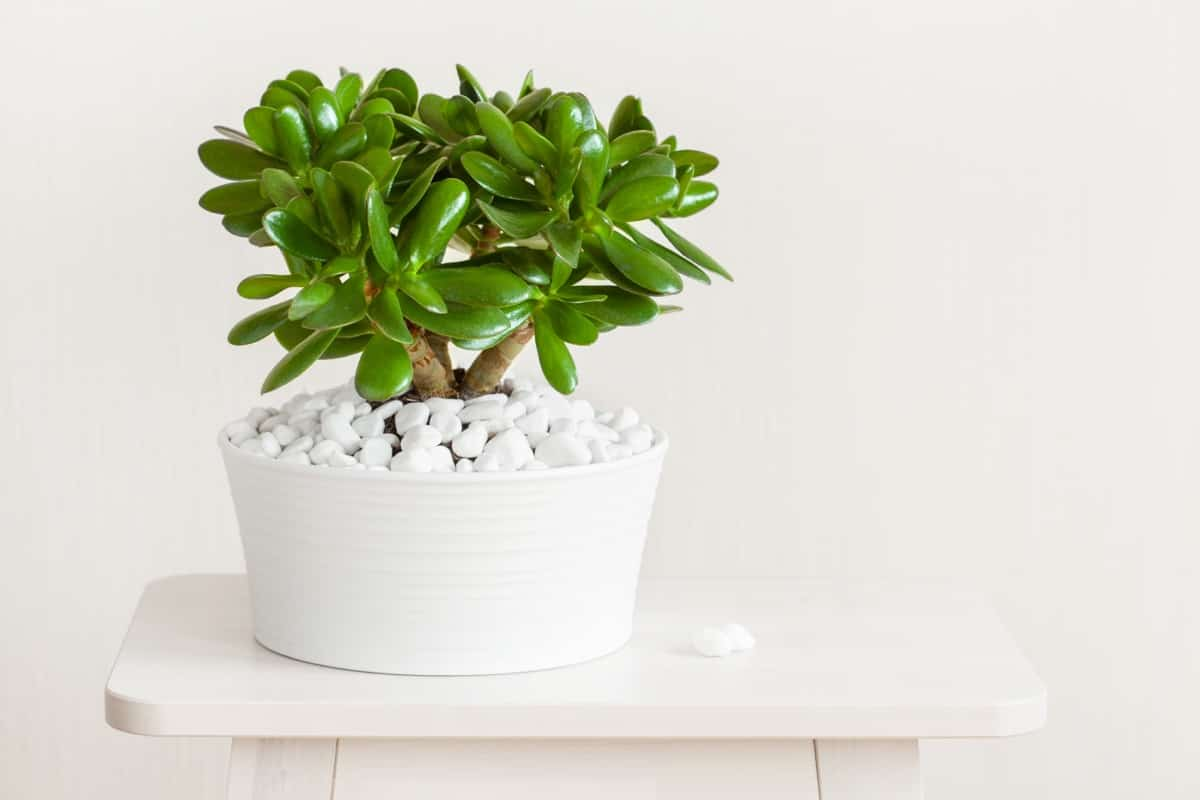
Jade can even handle temperatures below 10°C if sheltered from direct sunlight or drafts. But be warned, and this plant will not do well in humid environments, so keep it dry when the weather dips below 10°C. Overall, Jade is a great choice for an indoor plant in colder climates because of its hardiness and ability to tolerate lower temperatures. Just give it the right conditions to thrive and avoid getting too cold.
Snake Plant
Snake plants are the most popular indoor plants because they are cold-tolerant. They can tolerate temperatures as low as 4°C, which is great for areas with a lot of cold weather. You can propagate Snake plants by dividing the stem into sections or by taking off a section of the stem, then replanting it in fresh soil. Snake plants are native to subtropical climates and tolerate lower light levels and cooler temperatures than other indoor plants. They generally do well in low-light environments and grow in hanging baskets or window boxes.
In case you missed it: Growing Snake Plants Indoors – A Full Guide
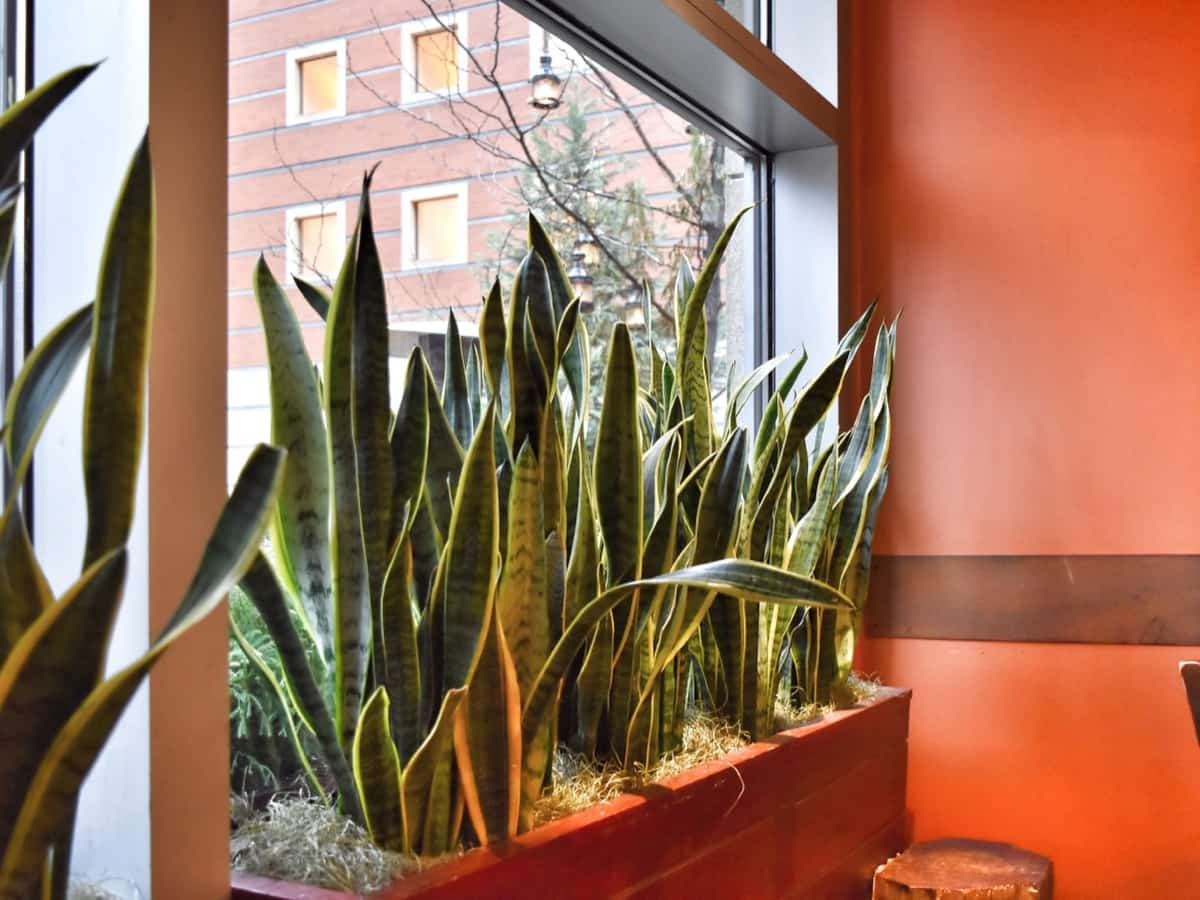
Snake plants have thick, fleshy leaves that are dark green on the bottom and light green on top. The flowers are small and white and typically grow at the tips of the leaves. As with most plants, care must be taken when watering Snake plants; too much water can cause them to droop or become overwatered. Additionally, Snake plants should not be moved from their current location until they have had a chance to adjust; this will help prevent breaking or upsetting the roots.
Fiddle Leaf Fig
Fiddle Leaf Fig is a slow-growing, succulent indoor plant that is cold tolerant. Fiddle Leaf Fig will not tolerate temperatures below 0°C, but it can survive in colder climates if grown in a brightly lit area with adequate ventilation. The Fiddle Leaf Fig leaves are narrow and fleshy with a distinctive arrowhead shape. If you live in cold weather, consider growing some cold-tolerant indoor plants. This low-maintenance plant grows well in a container or on a window ledge and can be used as a decorative addition to any room.
Christmas Cactus
If you want an indoor plant that can withstand colder temperatures, look no further than the Christmas cactus. This plant is popular for its long, spindly branches and green-tinged leaves and can be kept in any room of your home. While Christmas Cacti are not native to cold climates, they do well in a drafty environment or near a window where they can receive sunlight.
In case you missed it: Indoor Plants That Can Be Used as Christmas Tree Alternatives
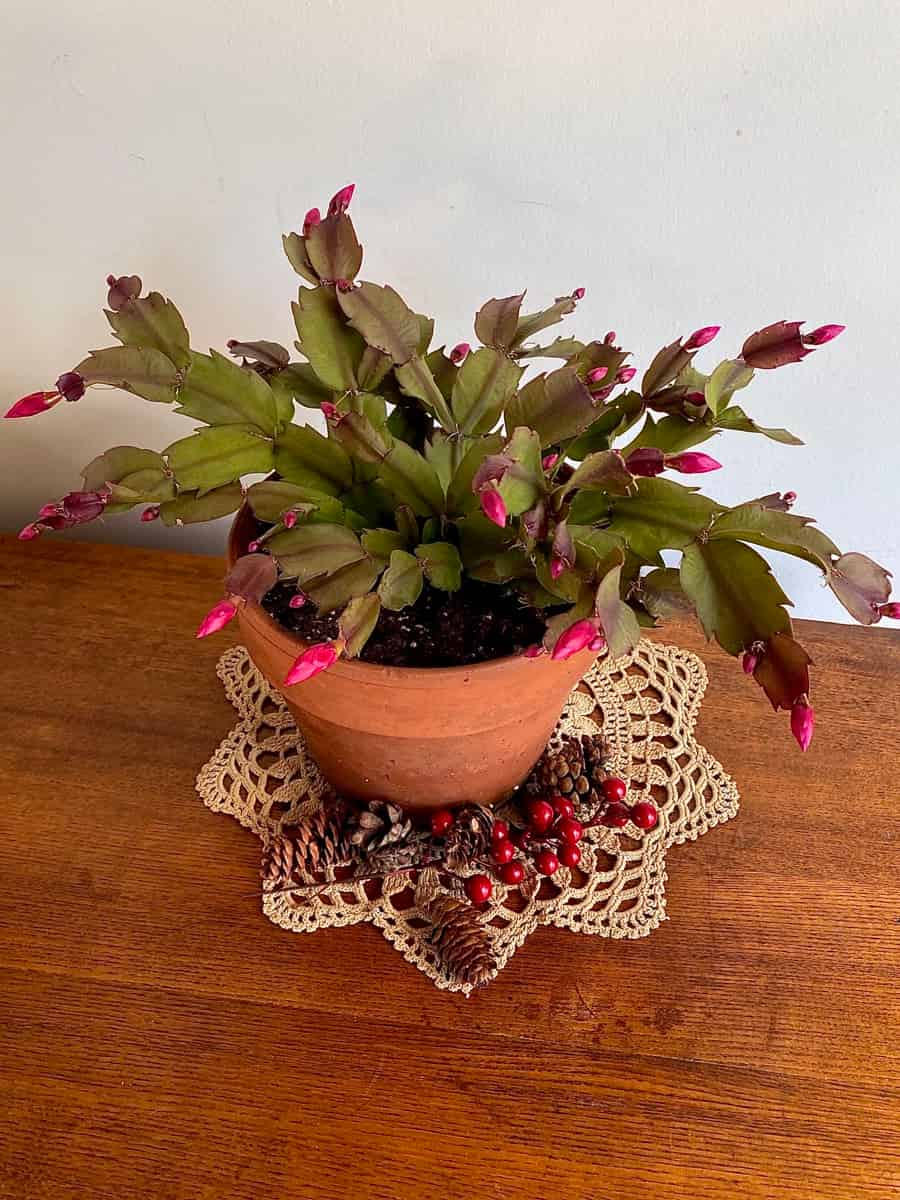
To keep your Christmas Cactus healthy during the winter months, clean it regularly and place it in a spot where it will not get too much indirect sunlight. These plants are typically cold tolerant and can withstand temperatures around 10°C. To keep your Christmas Cactus healthy during the winter, give it plenty of sunlight and water. In a warm climate, you may not water as often as in colder climates since these plants are adapted to drought conditions.
Ponytail Palm
Most indoor plants grow best in warm climates, but a few cold-tolerant plants can survive in colder temperatures. Ponytail Palm is a good plant for people in colder climates because it can tolerate temperatures as low as 10°C. This makes it the best choice for people who have trouble keeping other plants alive during winter. Another advantage of Ponytail Palm is that it can be used as an artificial green shade. Because the plant hangs down, it blocks most of the light from the sky and makes it easier for people to get sunlight during the day.
Keeping an indoor garden thriving in the winter can be a challenge. This palm is commonly found in warm climates but can adapt to colder environments if grown in enough light. Ponytail Palms are low-maintenance plants that require little watering or attention during the winter. They do best in slightly dry soil and are free from pests or diseases. Providing balanced light and humidity is also important for this plant to flourish.
Philodendron
These are evergreen or semi-evergreen tropical plants that can tolerate various temperatures, making them perfect for indoor plants in winter weather. Plants in the Philodendron genus are generally very easy to care for and make great additions to any home decor. They need relatively low light levels and plenty of humidity, and they do best when kept evenly moist. As long as you know these requirements, Philodendrons should be easy to care for indoors during winter weather.
In case you missed it: 13 Best Fragrant Night Blooming Plants: Transform Your Garden into Scented Bliss
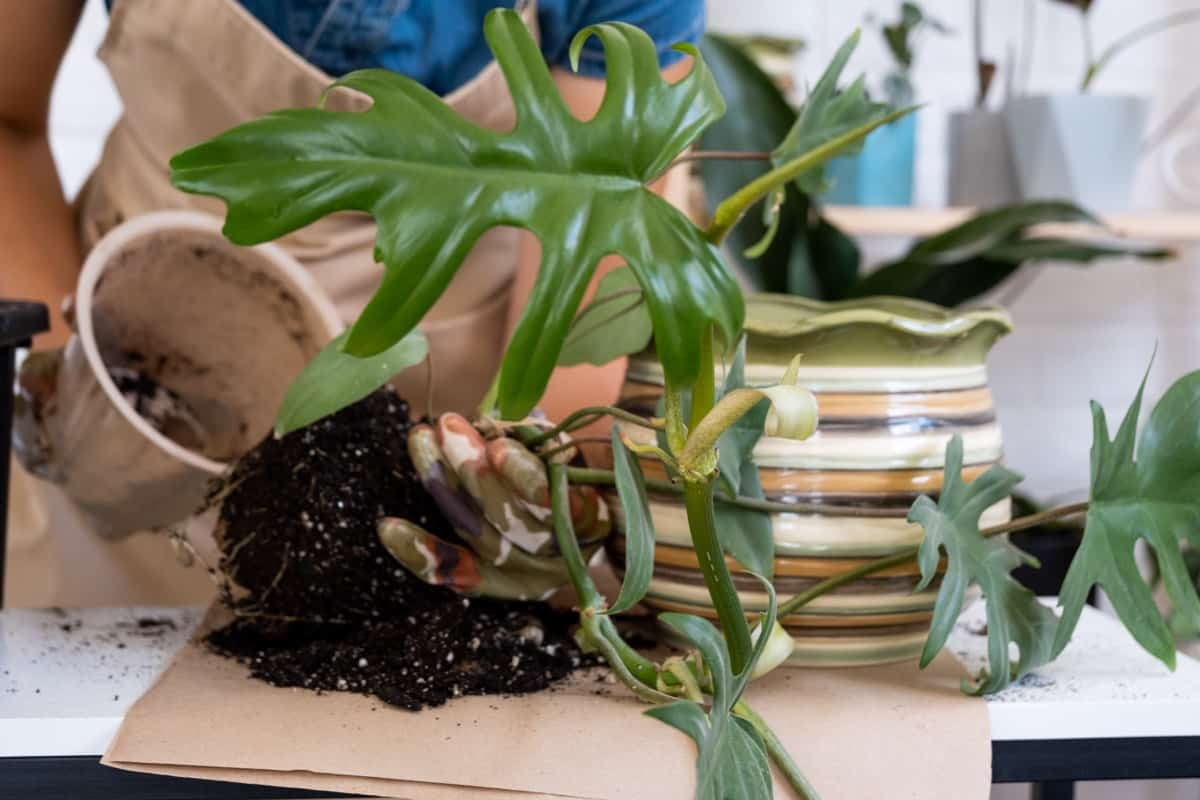
Philodendrons are popular plants for those who want an indoor plant that will tolerate cold weather. These plants can be kept indoors all year long in climates where temperatures rarely fall below 10°C. However, in a colder climate, it is important to know how to care for Philodendrons to keep them healthy and happy. They will not do well if kept in a cold environment without proper hydration and ventilation. To ensure your Philodendron stays healthy, it is important to provide ample sunlight and humidity.
Chinese Evergreen
Chinese Evergreen plants are perfect for those living in colder climates, as they boast a range of tolerances for low temperatures. These plants can be kept indoors during the winter without any issues, making them an ideal choice for anyone looking to stay cozy while enjoying a beautiful garden. Many cold-tolerant indoor plants can be used in the winter. One such plant is the Chinese Evergreen, which can tolerate temperatures down to 3°C.
This plant has large leaves and grows well in low-light conditions, making it a good choice for apartments or places with limited space. Chinese Evergreen plants are ideal for cold climates due to their low water needs and ability to endure short periods of chilly weather. They make excellent indoor plants since they are not as fussy about light as other plants and can be grown in various settings, including bright or dusky rooms.
Hoya
These plants are commonly known as hardy houseplants because they can tolerate low light levels and temperatures. They are often grown indoors as decoration or to provide shade. Some species of Hoyas are cold tolerant, meaning they can survive in areas below freezing. These plants have thick leaves and can handle low light levels and temperatures well. They are best suited for indoor growing conditions with periodic exposure to cold weather.
Maidenhair Fern
Maidenhair Ferns are a type of indoor plant that is generally cold-tolerant. They grow well in low-light environments and can be grown indoors in most temperate climates. These plants are popular for floor plants or houseplants because of their adaptability and low maintenance requirements. Maidenhair Ferns are also easy to propagate from cuttings, making great additions to any home garden.
In case you missed it: Best Ferns for Hanging Baskets: Types of Ferns to Grow in Hanging Planters

Maidenhair Ferns require little attention once they are installed in your home. They should be moist but not soaked and receive only occasional water changes. These plants may need to be protected from frost damage during the winter months. To do this, place a layer of dry potting soil between the plant and the outside world, or cover the plant with a plastic bag if temperatures are below freezing overnight.
Conclusion
Many plants can be used as indoor plants in colder climates. Some of these plants are tolerant of cold weather and will not suffer from the lack of sunlight or low humidity that accompanies winter weather. These plants require less care than tender annuals and will normally remain relatively healthy even when subjected to low light and humidity conditions.
The best way to choose a plant for your home is to consider its natural adaptation to cold climates. If you live in a cold climate, consider selecting a plant native to your area. These plants can handle the colder temperatures in your home without suffering too much damage.
- Growing Gold: Essential Techniques for Planting Pineapples
- How to Make Kalanchoe Plant Bushy: Home Remedies and Solutions
- 11 Reasons Why Your Gardenia is Not Blooming: Home Remedies and Solutions
- Eco Elegance: The Guide to Designing a Drought-Tolerant Landscape
- Gardening on a Slope: Strategies for Hillside Landscaping
- Nourish and Flourish: Top Organic Mulches for Thriving House Plants
- Everything You Want to Know about Indian Mogra Flower: Discover Uses and Growing
- Green Thumb Success: Expert Tips for Cultivating Greenhouse Pumpkins All Year Round
- Maximize Growth & Flavor: The Ultimate Guide to Companion Planting in Herb Gardens
- How to Control Rhododendron Problems Naturally: Home Remedies and Organic Ways to Fix Them
- Natural Magic: The Remarkable Benefits of Cinnamon for Plants
- Best Steps to Revive Dying Tulip with Natural and Organic Treatment
- 10 Reasons Why Your Angel Trumpet is Not Blooming: Remedies and Treatment
- How to Fix Periwinkle Leaf and Flower-Related Problems: Natural Remedies and Solutions
- How to Fix Zinnias Leaf and Flower Problems: Discover Natural and Home Remedies
- Organic Steps to Induce Lemon Tree Flowers: A Comprehensive Guide
- Bloom Booster: Crafting the Perfect Homemade Bougainvillea Fertilizer
- Optimizing Growth: A Guide to Applying NPK Fertilizer for Potted Plants
- 10 Best Homemade Fertilizers for Rubber Plant: DIY Recipes and Application Method
- How to Boost Female Pumpkin Flowers: Effective Steps for More Flowers and High Yields
- Transform Your Indoor Garden: Top Benefits of Pink Salt for Houseplants
- 10 Best Homemade Fertilizers for Peacock Plants (Calathea): Easy DIY Guide
- Unlock Blooms: 9 Reasons Why Your Potted Chrysanthemum is Not Blooming
- 8 Reasons Why Your Potted Hibiscus is Not Blooming: Fix it with Simple Solutions
- Unlock Blooms: 9 Key Reasons Your Potted Frangipani Won’t Flower
- 10 Reasons Why Is My Ice Plant Not Blooming: Remedies and Treatment
- 10 Reasons Why My Potted Hydrangea Not Blooming: Treatment and Remedies
- 10 Reasons Why is My Wisteria Not Blooming: Remedies and Treatment
- 10 Reasons Why is My Goldfish Plant Not Blooming: Remedies and Treatment
- Maximize Your Space: Ultimate Guide to Balcony Gardening with Grow Bags
- 10 Reasons Why Your Iris is Not Blooming: Remedies and Treatment
- 10 Reasons Why Your Anthurium Plant is Not Blooming: Treatment and Remedies
- 10 Reasons Why Your Aquaponic Plants Are Not Flowering: Remedies and Treatment
- 10 Reasons Why Your Agapanthus is Not Flowering: Remedies and Treatment
- Ultimate Guide to Brown Turkey Fig: Steps to Growing Brown Turkey Figs
- How to Grow Acai Berry: Propagation, Planting, and Care